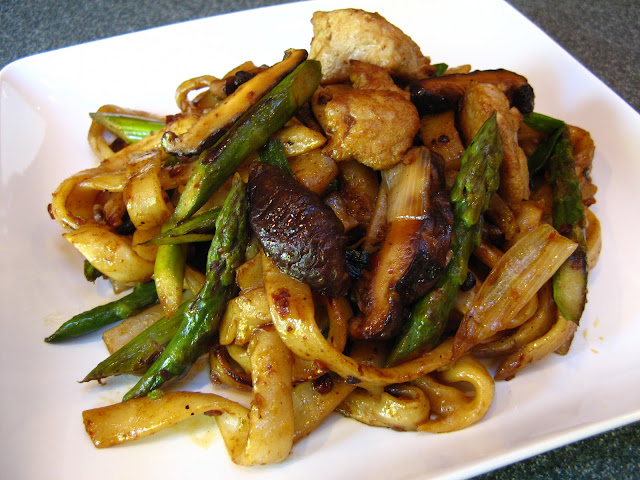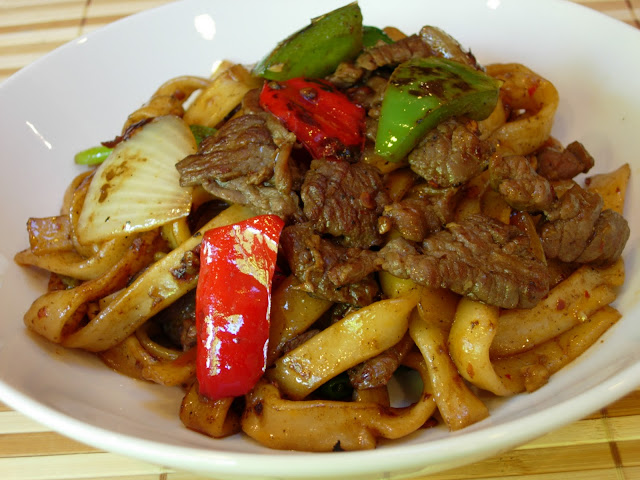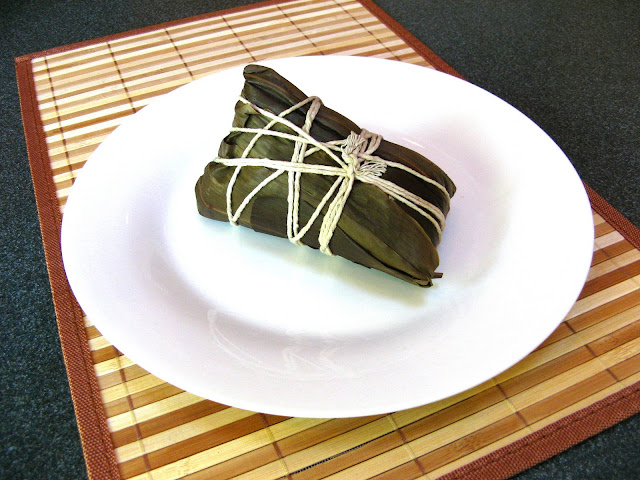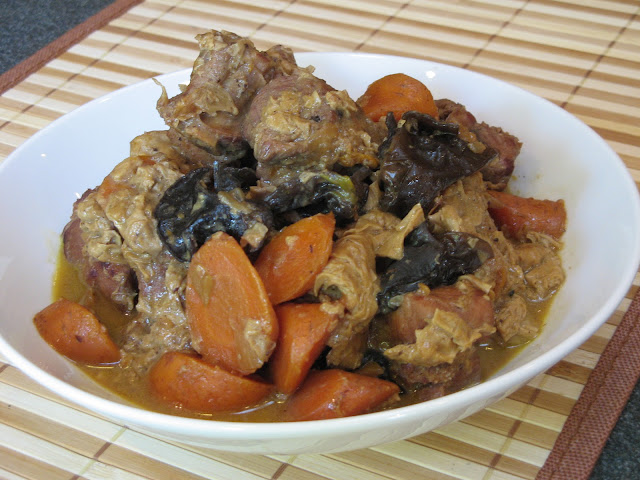This recipe was updated on 25 Sep 2015. Some instructions
and ingredient quantities were changed, and metric measurements added.
Here’s another variation, using chicken and asparagus, for
making chow mein with dough sliced noodles. Unlike the dish at the local
Chinese Muslim restaurant, this version uses spicy black bean chili sauce. Dough
sliced noodles are aptly named since the noodles are sliced from a block of
dough. The noodles are also called knife-cut noodles. The noodles have a chewy doughy
texture, unlike normal chow mein noodles. I always wondered how to get or make
these noodles. Now I don’t have to go to a restaurant to get this dish since I
found the dough sliced noodles in the freezer section at my local Asian market.
The dough sliced noodle package contains 5 packs of noodles
each weighing 200 grams (for a total of 1 kilogram). While the package says
that you don’t have to thaw the noodles before cooking, I defrost my noodles
overnight before use. You can always use the microwave to defrost the noodles
if you forget to defrost them (1 minute on high works for me). Once I forgot to
defrost the noodles, and I put the noodles in boiling water briefly to defrost
them. The noodles definitely get defrosted, but the texture is not as chewy
after being boiled. If you can’t find dough sliced noodles, you can substitute
another flat noodle.
Enjoy!
































